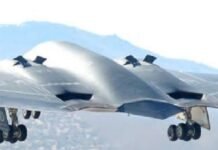In a decisive move underscoring India’s firm stance on national security, Indian Army Chief General Upendra Dwivedi has granted complete operational authority to field commanders along the western border to respond forcefully to any breach of the ceasefire understanding agreed upon during the DGMO-level talks held on May 10, 2025. The order comes in the wake of escalating tensions between India and Pakistan following recent cross-border hostilities.
According to a statement issued by the Indian Army, the Chief of the Army Staff (COAS) has directed that commanders in charge of operations along the Line of Control and other sensitive frontier zones are empowered to initiate “kinetic” countermeasures in response to any Pakistani provocation. The military term “kinetic domain” refers to active combat actions, including the use of firepower and tactical movement, indicating that India will not hesitate to retaliate militarily if provoked again.
This strategic posture was established following General Dwivedi’s high-level security review meeting with Army Commanders responsible for operations on the western front. The decision follows a night of high alert after a series of ceasefire and airspace violations on the night of May 10-11. Although no fresh outbreak of violence was reported following the DGMO talks, the Army chief’s instruction signals that India remains on guard and fully prepared to act if the fragile truce is shattered.
An hour prior to the ceasefire announcement yesterday, top-level Indian government sources had stated unequivocally that any future terror activity linked to Pakistan would be viewed as an act of war. This hardline position stems from the brutal attack on April 22 in Pahalgam, Jammu and Kashmir, where 26 Indian tourists were killed in an assault blamed on Pakistan-backed terrorists.
India responded with precision strikes using cruise missiles targeting terror infrastructure across the border in Pakistan and Pakistan-Occupied Jammu and Kashmir (PoJK). These strikes reportedly neutralized key facilities, including training camps and arms depots. However, the situation escalated further when Pakistan retaliated by targeting Indian civilian areas with drones.
In response, India launched a second round of targeted operations, striking deep into Pakistani territory. Military targets in Rafiqui, Chaklala, Rahim Yar Khan, Sukkur, and Sialkot were hit, specifically focusing on radar systems, command hubs, and ammunition stockpiles, showcasing India’s enhanced operational reach and technological superiority.
While both countries have now formally agreed to a ceasefire, the Indian Army’s latest directive reflects a policy of strategic deterrence — warning that any aggression from the other side will be met with swift and proportionate retaliation. Military analysts see this move as a continuation of India’s doctrine of proactive defense, where tactical freedom is given to field units to respond in real-time without delay.
The evolving dynamics between the two nuclear-armed neighbors remain a matter of international concern. The role of third-party mediation — including involvement from the United States — helped bring about the current ceasefire, but the on-ground military readiness in India sends a clear message: peace will be maintained, but not at the cost of sovereignty or security.
#IndiaPakistanCeasefire #IndianArmy #WesternCommand #COASAuthority #KineticResponse
This is an auto web generated news web story.





